SPACE UPDATES
More Updates

Venus and Mercury’s Rare Sunset Conjunction Marks the End of a Stunning Planet Parade – Don’t Miss It!
Catch Venus and Mercury Shining Together in the Western Sky at Sunset on March 10 – Here’s How to See It Before They Vanish

NASA Warns: “City-Killer” Asteroid Has 1-in-43 Chance of Striking Earth in 2032
NASA scientists have revealed that a newly discovered space Asteroid, 2024 YR4, has a 2.3% chance of colliding with Earth—making it one of the most intriguing near-Earth objects on their radar.

Space Photo of the Week: Webb & Hubble Team Up to Unravel ‘Impossible’ Planet Mystery
New observations from the Space Photo James Webb Space Telescope of the star cluster NGC 346 are providing groundbreaking insights into the origins of planetary formation in the early universe—revealing when, where, and how these cosmic worlds first took shape.

NASA & Japan Launch World’s First Wooden Satellite A Game-Changer for Space & Earth’s Future
NASA and JAXA have launched LignoSat, the world’s first wooden satellite, to combat space junk with a biodegradable solution.

NASA’s New X-Ray Robot to Watch Earth Breathe from the Moon
NASA’s LEXI instrument is gearing up for its lunar landing this month. Equipped with advanced X-ray sensors, LEXI will observe Earth’s atmosphere as it Breathe in and out, offering groundbreaking insights into the mysteries of space weather

Cosmic Wonder Hubble Captures a Breathtaking Snow Angel Formed by a Bright Young Star
In this mesmerizing Hubble image, the bipolar star-forming region known as Sharpless 2-106 offers a stunning glimpse into the intensity of Snow Angel star formation. Created by the fierce energy of a young, bright star, this cosmic masterpiece showcases the dramatic and powerful processes that shape our universe.

Will the Universe End in a ‘Big Freeze’? A Stunning Holographic Theory Reveals All
New research suggests holographic dark energy could stop the Universe Freeze expansion.
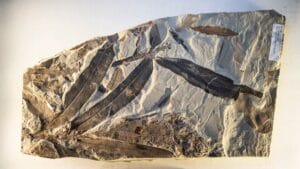
Alien Plant Fossil Found Near Utah Ghost Town: Unlike Anything on Earth
Fossilized Alien Plant remains unearthed near a Utah ghost town baffle scientists, defying classification as they belong to no known modern or extinct plant family, sparking intrigue and further research.
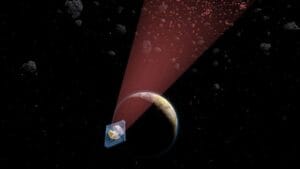
James Webb Telescope Discovers 100+ New Asteroids Between Jupiter and Mars — Some on Potential Earth-Bound Paths!
Astronomers using JWST’s archival images New Asteroids have uncovered a surprisingly large population of the tiniest asteroids ever observed within the asteroid belt located between Mars and Jupiter.
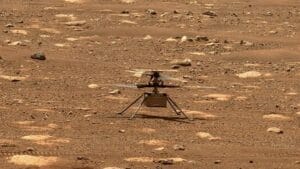
NASA’s Ingenuity Survives Mars Crash, Could Transform Into a 20-Year Weather Station
Ingenuity’s Final Gift: Continuing its Mission as a Weather Station, Providing Vital Data for Years to Come on Mars
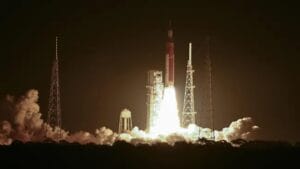
NASA Postpones Historic Artemis Missions Yet Again – What’s Causing the Delay
NASA delays Artemis moon missions due to technical issues but remains determined to beat China to the lunar surface, reaffirming commitment to its historic lunar exploration goals
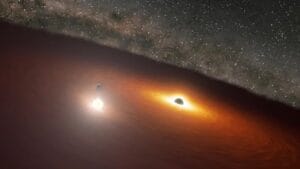
James Webb Telescope Uncovers ‘Impossible’ Black Holes: A New Cosmic Mystery Explained
The James Webb Space Telescope has revealed enormous black holes in the universe’s infancy, far too massive for their age. New research points to primordial “seeds”—dense matter from the Big Bang—as the key to their rapid formation, offering fresh insights into cosmic evolution
Seek the Mustery of the Cosmos – Unlock the Secrets of Space Mysteries and Beyond
Embark on an extraordinary journey beyond the confines of Earth and venture into the infinite wonders of the cosmos with the Space category on seekthemustery.com. This exciting realm invites you to dive deep into the mysteries of astronomy, astrophysics, and the vast expanse of the universe. The universe is a place of boundless possibilities and profound questions, and each corner of space holds answers waiting to be discovered, from distant galaxies to the enigmatic black holes that challenge our understanding of physics.
At seekthemustery.com, we strive to make the cosmos accessible to everyone, regardless of their level of expertise. Whether you’re a seasoned space enthusiast or someone with a budding curiosity about the stars, our Space category is designed to quench your thirst for knowledge. Explore breathtaking facts about the universe, from the life cycle of stars to the formation of planets, moons, and the many celestial phenomena that populate the night sky. Our articles delve into the cutting-edge of space exploration, covering the latest missions from NASA and private companies that are revolutionizing space travel and our understanding of the cosmos.
Some of the thrilling topics you can explore include:
- The Origin and Evolution of the Universe: Learn about the Big Bang theory, the formation of galaxies, and the ongoing expansion of the universe. Understand how our universe came to be and where it might be heading in the future.
- Stunning Facts About Our Solar System’s Planets and Moons: Get up close and personal with the planets, moons, and other celestial bodies that make up our solar system. Discover surprising facts about Earth’s neighboring planets, such as the volcanic surface of Venus and the giant storms of Jupiter, as well as the mysteries of Saturn’s rings and the icy moons of Neptune.
- Black Holes, Wormholes, and Other Cosmic Enigmas: Delve into the dark side of the universe with topics like black holes, wormholes, and singularities. These cosmic objects challenge our understanding of space and time, and their study could unlock new realms of physics.
- The Search for Extraterrestrial Life and UFO Sightings: Explore humanity’s efforts to find life beyond Earth, from the search for exoplanets in the habitable zone to UFO sightings that continue to spark global fascination and debate.
- Astronomical Phenomena like Supernovas, Eclipses, and Meteor Showers: Witness the awe-inspiring beauty of celestial events such as supernovas, the spectacle of a total solar eclipse, and the thrill of meteor showers. Our articles take you behind the scenes of these events, explaining their science and significance.
Our expertly curated content is designed to be informative, engaging, and thought-provoking. Whether you’re a stargazer with a telescope or a casual reader fascinated by space, we provide insights and discoveries that will expand your knowledge and spark your curiosity. From the science behind celestial events to the latest developments in space technology, our Space category brings the universe closer to home.
The Space category also explores how humanity has interpreted the cosmos over the centuries. Discover the ancient civilizations’ interpretations of the stars and planets, from the Egyptians and Mayans to the Greeks and Romans, and how these early astronomers laid the groundwork for modern space exploration. Our content also delves into the groundbreaking technologies and missions that are taking us farther into space than ever before, such as the Mars rovers, the Hubble Space Telescope, and the James Webb Space Telescope, which has provided breathtaking images of distant galaxies.
At seekthemustery.com, we believe that space is not just a place for scientists and astronauts—it’s a frontier for everyone. The vastness of the universe invites all of us to dream and to ask questions about our place in it. Our articles aim to inspire awe and curiosity, inviting readers to question, learn, and envision the possibilities that lie beyond our world.
With each new discovery and every new breakthrough, we come one step closer to understanding the infinite beauty and complexity of the cosmos. Join us as we explore the mysteries of space, uncovering its secrets and sparking wonder along the way. Whether you’re looking for a deep dive into astrophysical theories or simply want to marvel at the beauty of the night sky, the Space category on seekthemustery.com is your portal to the cosmos.
Keywords: space mysteries, astronomy, universe exploration, celestial phenomena, planets and stars, space travel, black holes, extraterrestrial life, cosmos, solar system facts, astrophysics, stargazing, cosmic wonders, space science.






